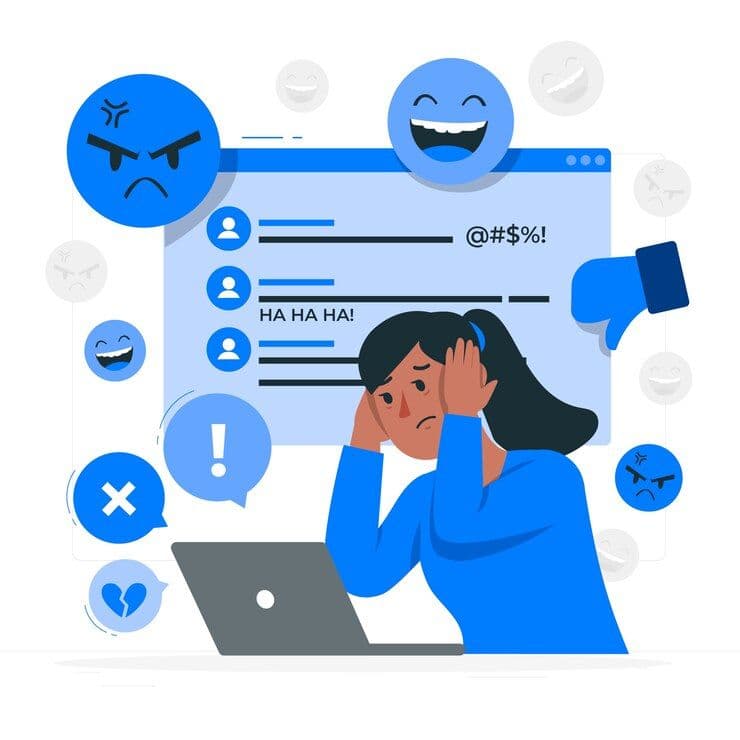
The internet, a vast digital expanse connecting billions of individuals globally, serves as a virtual arena for discourse, information-sharing, and social interaction. Yet, within this expansive landscape, a persistent phenomenon known as internet trolling disrupts the fabric of online communities. Trolls are individuals who engage in disruptive behavior, posting inflammatory remarks, off-topic comments, or deliberately provocative content to elicit emotional responses and derail discussions. This article covers internet trolling and its impacts on online communities, and presents strategies for effective management, drawing insights from recent research.

Internet trolls are not mythical creatures lurking under bridges, but ordinary individuals who seek attention through disruptive online behavior. Traditionally viewed as inherently antisocial, recent studies challenge this stereotype. According to Cristian Danescu-Niculescu-Mizil, assistant professor of information science at Cornell University, “While prior work suggests that trolling behavior is confined to a vocal and antisocial minority, ordinary people can, under the right circumstances, behave like trolls.” This insight emerged from research presented at the ACM Conference on Computer-Supported Cooperative Work and Social Computing, highlighting that trolling behavior can be triggered by negative mood and exposure to other trolls.
The motivations driving trolling are diverse and complex. Trolls may seek attention, derive amusement from causing disruption, or use trolling as an outlet for frustration. The Cornell research underscores that mood plays a pivotal role in triggering trolling behavior, challenging the notion that trolls are inherently malicious individuals. Their study, which involved analyzing millions of posts on CNN.com, revealed a concerning trend: as the number of flagged troll posts in a discussion increases, so does the likelihood of subsequent posts being flagged, underscoring the contagious nature of trolling within online communities.

Trolling extends beyond mere disruption; it can fracture community cohesion, stifle meaningful dialogue, and create an atmosphere of distrust and animosity. The Cornell study also noted that trolling behavior tends to peak during late-night hours and on Mondays, mirroring patterns associated with negative mood states observed in their experiments. This insight underscores the importance of proactive moderation strategies and community guidelines to mitigate the spread of disruptive behavior and foster a respectful online environment.
Trolling manifests across a spectrum of digital platforms, each presenting unique challenges for moderation and community management:
1. Message boards and forums: These platforms are popular among trolls due to their open nature and potential for prolonged interactions.
2. Social media platforms (e.g., Facebook, Twitter, Instagram): Trolls exploit the viral nature of social media to amplify their disruptive messages and provoke reactions.
3. Video comment sections (e.g., YouTube, TikTok): Video content attracts trolls who use comments to hijack discussions or spread inflammatory content.
4. Blog comments and news websites: Trolls infiltrate comment sections to derail conversations, spread misinformation, or incite conflict.
5. Gaming communities and live streams: Trolling in gaming environments ranges from disruptive gameplay to toxic interactions in chat rooms, impacting community dynamics.
Each platform requires tailored approaches to address the diverse tactics trolls employ to disrupt discussions and derail productive exchanges.
The Insult Troll: Provokes others with offensive language to incite conflict and emotional reactions. These trolls thrive on stirring up negative emotions and disrupting community harmony.
The Persistent Debate Troll: Engages in prolonged arguments without seeking resolution, perpetuating conflict within discussions. They derail conversations by focusing on trivial details or repetitive arguments.
The Grammar and Spell-Check Troll: Obsessively corrects language errors to disrupt communication flow and undermine participants’’ credibility. Their nitpicking behavior derails discussions and frustrates participants.
The Forever Offended Troll: Easily takes offense and derails discussions by shifting focus to personal attacks and emotional responses. They divert attention from the topic at hand, creating tension and hostility.
The Show-Off, Know-it-All, or Blabbermouth Troll: Dominates discussions with excessive self-promotion, perceived expertise, or irrelevant anecdotes. They seek attention and validation while derailing meaningful exchanges.
The Profanity and All-Caps Troll: Uses aggressive language and capitalization to provoke and violate community guidelines. They disrupt discussions with inflammatory remarks and offensive language.
The One Word Only Troll: Responds minimally with one-word replies to disrupt coherent discussions. Their minimalistic approach adds little substance and undermines meaningful exchanges.
The Exaggeration Troll: Fabricates or inflates information to incite reactions and distort factual discourse. They manipulate information to provoke emotional responses and undermine credibility.
The Off-Topic Troll: Shifts discussions away from the main topic to disrupt coherence and divert attention. They introduce unrelated or controversial topics to derail productive conversations.
The Greedy Spammer Troll: Floods platforms with irrelevant content, self-promotion, or repetitive messages, diminishing community trust and engagement. They overwhelm discussions with noise, reducing the quality of interaction.

Effectively managing trolling behavior requires a multifaceted approach that includes:
Legal frameworks such as cyberbullying laws, provide protections against online harassment, underscoring the need for platforms to enforce policies that safeguard user welfare. Ethical considerations encompass the responsibilities of platforms and users in fostering a positive online environment where mutual respect and constructive dialogue prevail. Reporting mechanisms empower users to address abusive behavior promptly, ensuring swift and appropriate responses to instances of trolling.
In conclusion, internet trolling is a nuanced behavior influenced by both individual predispositions and environmental triggers. By understanding the diverse motivations behind trolling and implementing proactive moderation strategies, digital communities can mitigate its disruptive impact and cultivate environments conducive to constructive interaction and mutual respect. The future of online discourse hinges on collaborative efforts to address trolling effectively and uphold the integrity of digital interactions.Looking ahead, technological advancements and evolving online behaviors will continue to shape the landscape of trolling. Platforms must innovate their moderation approaches to adapt to emerging challenges and maintain standards of online civility, fostering inclusive digital spaces where diverse perspectives can thrive.